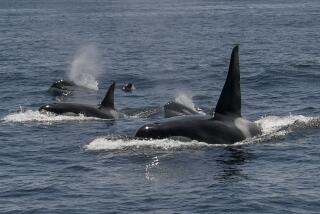Call Me Artiodactyl
Whales have long been a favorite romantic subject for writers. For Herman Melville, in his 1851 novel “Moby Dick,” they were symbols of deep, unfathomable knowledge. In the late 20th century, Heathcote Williams’ 1988 compilation “Whale Nation” saluted how this “extraterrestrial, who has already landed” became the dominant species of the sea “without killing its own kind.”
Writers’ attraction to whales has been more sentimental than scientific. Now, two large sets of fossils recently discovered in northern Pakistan by Northeastern University’s Hans Thewissen and the University of Michigan’s Philip D. Gingerich provide a new understanding of the bond.
The new fossil finds have ended a conflict between two once-fractious groups of scientists. Old-school, Indiana-Jones-style fossil diggers, based on skimpy fossil evidence, had grouped whales with an extinct, carnivorous mammal resembling a modern hyena. Up and coming molecular biologists recently used DNA analysis to conclude that whales are closer to Artiodactyls, a biological order of mostly plant-eating mammals like pigs, cows and camels that has a long history of interaction with humans. Thewissen and Gingerich, both fossil diggers who had believed in the older theory of whales’ origins, in the end unearthed hard evidence to support the biologists’ theory.
Now, a bloodier sort of conflict may prevent the diggers from answering one remaining mystery: Why did the whales’ land ancestor decide, 50 million years ago, to crawl back into the sea? The two paleontologists believe the answer lies in the low hills of northern Pakistan, near their original finds. They recently scrapped plans to visit the region because of the threat of war.






